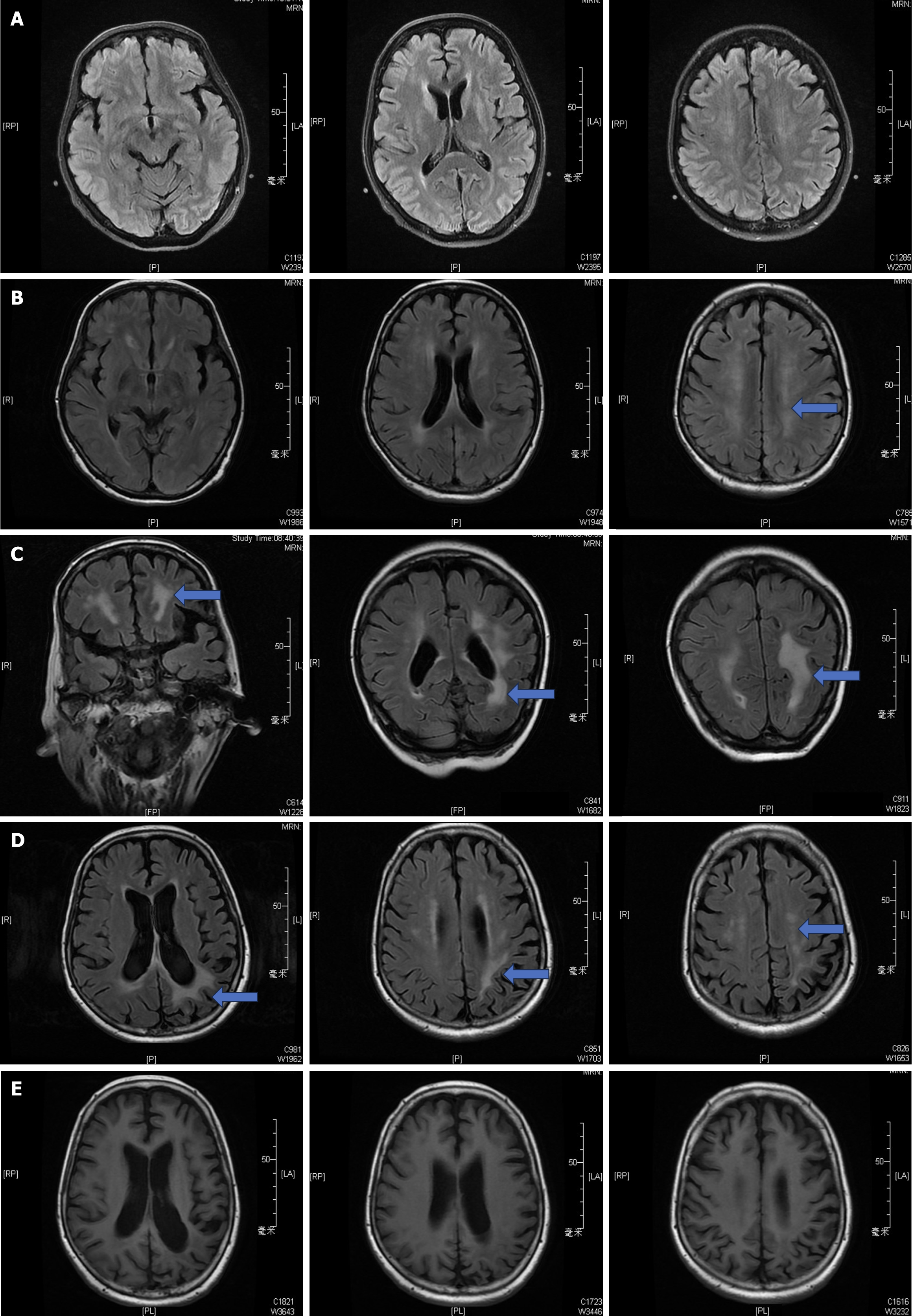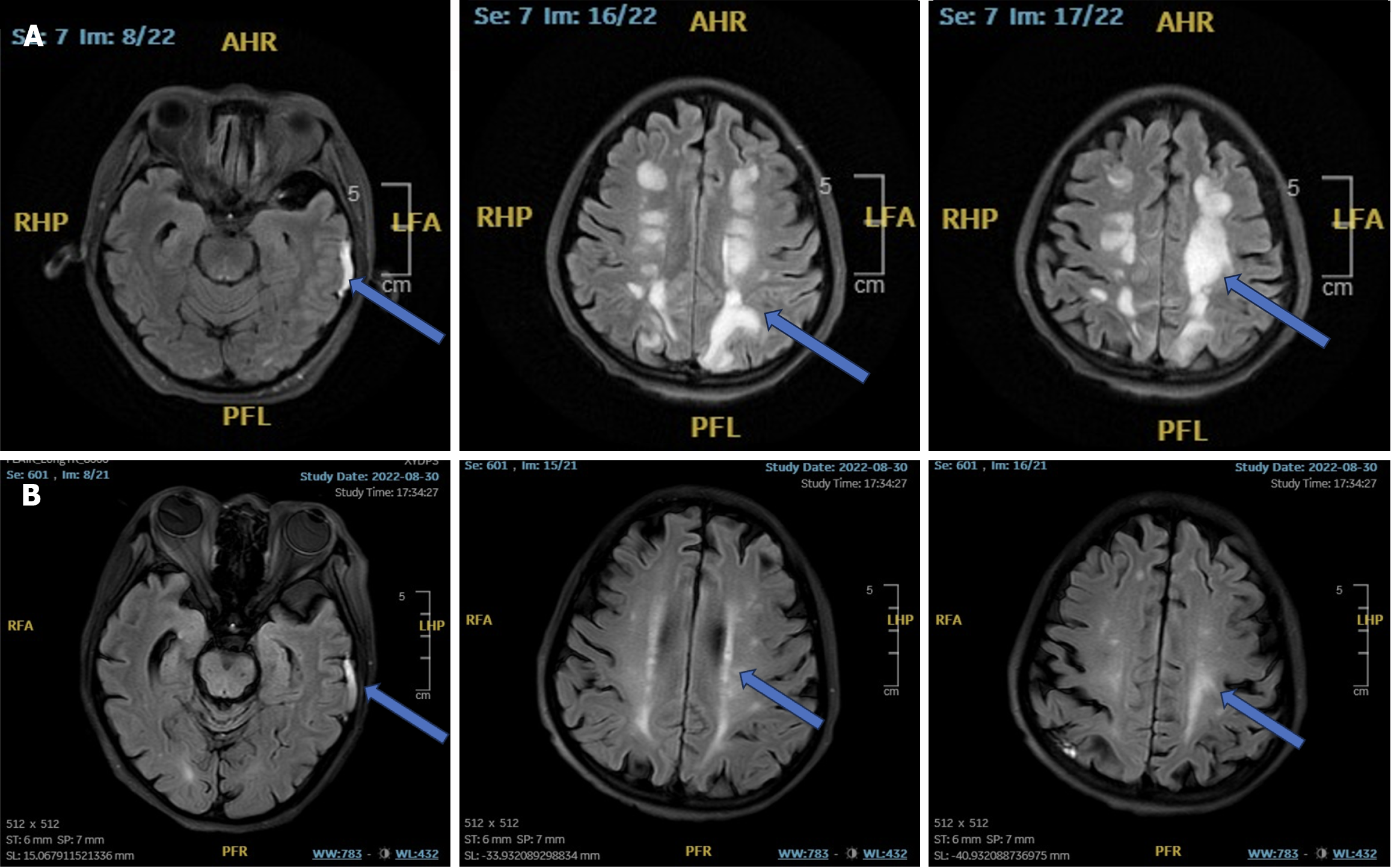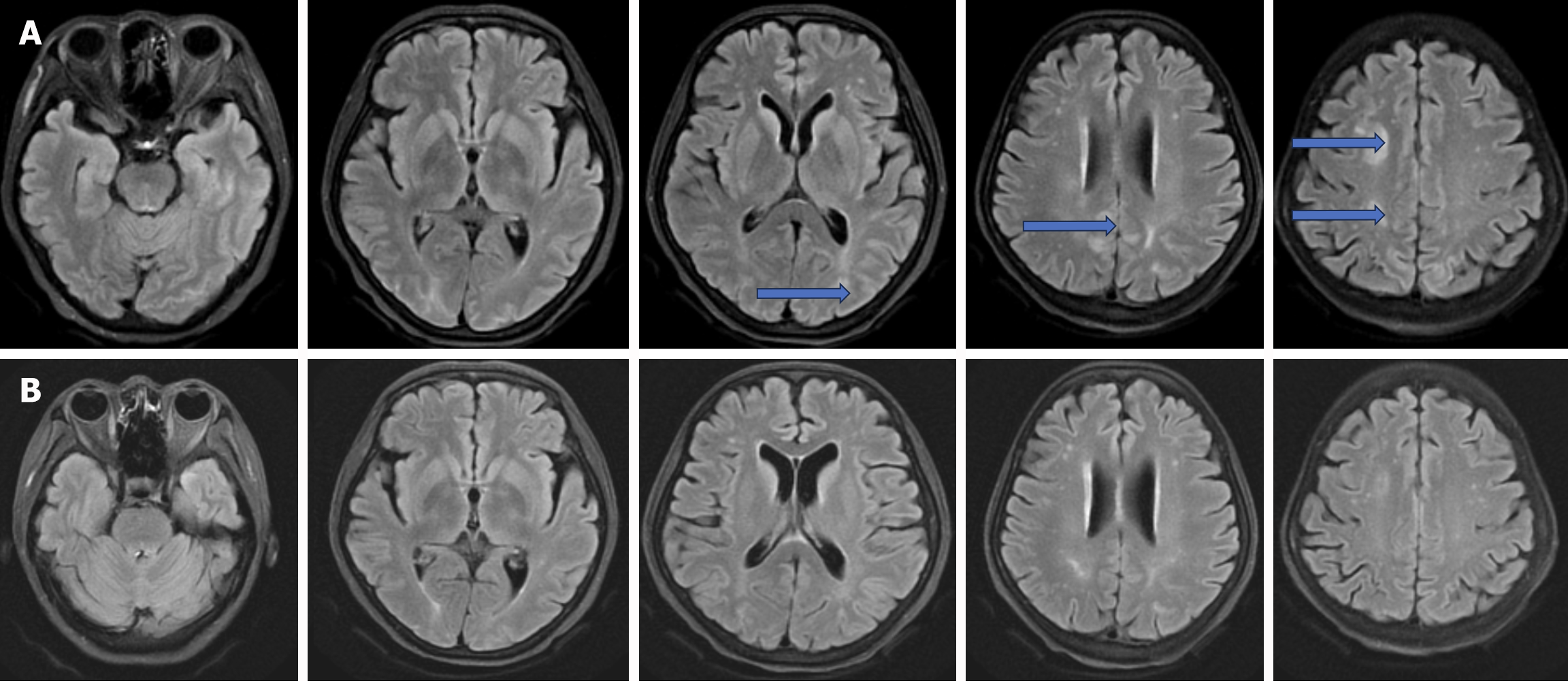Copyright
©The Author(s) 2024.
World J Hepatol. Sep 27, 2024; 16(9): 1297-1307
Published online Sep 27, 2024. doi: 10.4254/wjh.v16.i9.1297
Published online Sep 27, 2024. doi: 10.4254/wjh.v16.i9.1297
Figure 1 Cranial magnetic resonance imaging findings in patients monitored long-term (2016–2019).
A: On June 15th, 2016 [postoperative day (POD) 9], the cerebral magnetic resonance imaging (MRI) showed ischemic lesions in the bilateral frontal lobes, without noticeable white matter involvement; B: On June 27th, 2016 (POD 22), the MRI revealed a linear high signal in the left posterior parietal region on diffusion-weighted imaging and patchy high signals in the white matter and pons around both sides of the ventricles in fluid attenuated inversion recovery sequences; C: On August 12th, 2016 (POD 66), the MRI continued to show abnormal signals in the white matter surrounding the bilateral ventricles, with low signal intensity on T1-weighted images and slightly elevated signal intensity on T2-weighted images; D: On May 11th, 2018, the MRI still displayed abnormal signals in the white matter around the bilateral ventricles, with low signal intensity on T1-weighted images and slightly elevated intensity on T2-weighted images; E: On May 23th, 2019, the MRI showed no significant abnormalities in the white matter on T1-weighted and T2-weighted images.
Figure 2 The white matter lesions in the patient’s brain showed gradual resolution over 90 days.
A: Initially, multiple areas with low signal on T1-weighted images (T1WI) and high signal on T2-WI fluid attenuated inversion recovery images (FLAIR) were observed bilaterally beneath the cerebral cortex, in the corona radiata, and the centrum semiovale, as indicated by the blue arrows. No significant abnormalities were noted on diffusion-weighted imaging (DWI). Curvilinear high signal shadows on T1WI and T2WI-FLAIR were also observed in the left temporal subdural region; B: Later, the blue arrows highlight multiple linear regions with low T1WI signal and high T2WI-FLAIR signal, with no evident abnormalities on DWI, along both sides of the cerebral cortex, corona radiata, centrum semiovale, lateral ventricle, and left basal ganglia. Widening of the fluid space was noted under the left medial temporal pole. AHR: Anterior to horizontal right; PFL: Posterior to frontal left; LFA: Left frontal anterior; RHF: Right horizontal frontal.
Figure 3 Head magnetic resonance imaging of the liver transplant patient revealed significant recovery in brain white matter damage on postoperative day 22.
A: Scattered areas in the right frontal lobe and bilateral parietal cortex showed slightly decreased T1 signals and slightly increased T2 signals, as indicated by the blue arrows. No significant diffusion-restricted changes were observed on diffusion-weighted imaging (DWI). Specks and flaky abnormal signal shadows were detected beneath the cerebral cortex and near the lateral ventricles on both sides. T1WI displayed low signal intensity, while T2WI and fluid attenuated inversion recovery images (FLAIR) showed high signal intensity. No abnormal high signals were evident on DWI; B: Patchy T1 and T2 signals were noted in the right frontal and bilateral parietal cortex, with no apparent diffusion-restricted changes on DWI or notable abnormal enhancement post-contrast. Specks and flaky abnormal signal shadows were observed beneath the cerebral cortex and near the lateral ventricles on both sides. T1WI showed low signal intensity, whereas both T2WI and FLAIR revealed high signal intensity, with no abnormal high signals detected by DWI.
- Citation: Gong Y. Calcineurin inhibitors-related posterior reversible encephalopathy syndrome in liver transplant recipients: Three case reports and review of literature. World J Hepatol 2024; 16(9): 1297-1307
- URL: https://www.wjgnet.com/1948-5182/full/v16/i9/1297.htm
- DOI: https://dx.doi.org/10.4254/wjh.v16.i9.1297











